
Amado Vera Hernandez, was a Filipino writer and labor leader who was known for his criticism of social injustices in the Philippines and was later imprisoned for his involvement in the communist movement. He was the central figure in a landmark legal case that took 13 years to settle.
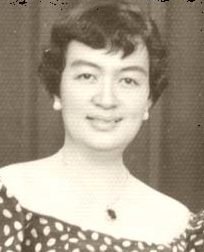
Liwayway A. Arceo was a multi-awarded Filipina fictionist, journalist, radio scriptwriter and editor from the Philippines.

Epifanio de los Santos y Cristóbal, also known as Don Pañong or Don Panyong, was a notable Filipino historian, journalist, and civil servant. He was regarded as one of the best Filipino writers and a literary genius. He also entered politics, serving as a member of the Malolos Congress from 1898 to 1899 from Nueva Ecija and later as governor of Nueva Ecija from 1902 to 1906. As a lawyer, he was named as the district attorney of San Isidro, Nueva Ecija in 1900 and later as fiscal of the provinces of Bulacan and Bataan. He was named as an assistant technical director of the Philippine Census in 1918. He was appointed Director of the Philippine Library and Museum by Governor General Leonard Wood in 1925, serving until his death in 1928.
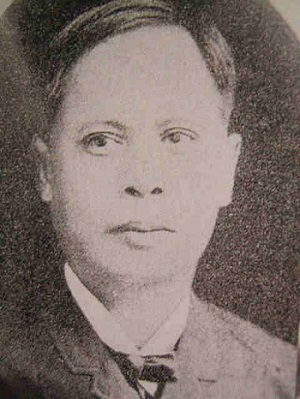
Deodato Arellano y de la Cruz was a Filipino propagandist and the first president of the Katipunan, which was founded at his home in Azcarraga Street, Manila. He was first to be given the title Supremo by the Katipunan. After studying bookkeeping in Ateneo de Municipal de Manila, he became an assistant clerk for the Spanish military. He was a member of the Freemasonry in the Philippines and became involved in the Propaganda Movement.
Mga Ibong Mandaragit or Mga Ibong Mandaragit: Nobelang Sosyo-Politikal is a novel written by the Filipino writer and social activist, Amado V. Hernandez in 1969. Mga Ibong Mandaragit, hailed as Hernandez's masterpiece, focuses on the neocolonial dependency and revolt in the Philippines. The novel reflects Hernandez's experience as a guerrilla intelligence officer when the Philippines was under Japanese occupation from 1942 to 1945.
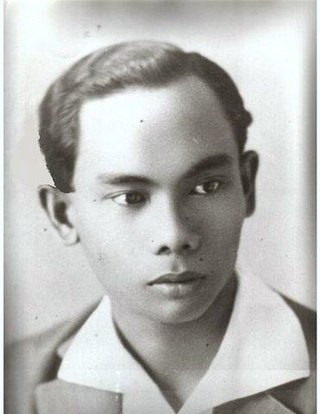
Alberto Segismundo Cruz was a Filipino poet, short story writer and novelist. Three of his novels have been published by Ateneo de Manila Press.
Pablo S. Gomez, was one of the top komiks writers in the Philippines. He was also a screenwriter and director. His most popular works include Kurdapya and Petrang Kabayo among others.
Soledad Sarmiento Reyes is a Philippine literature scholar, literary and art critic, author, anthologist, consultant, professor, instructor, editor, annotator, researcher, and essayist in the Philippines. Specializing in the field of popular culture and the arts in the Philippines, Reyes is a professor teaching interdisciplinary studies at the University of the Philippines and the Ateneo de Manila University. She is an accomplished author of books and anthologies. "sa nobela mababalatuba ang mga pangyayati sa buhay ng isang kagawad sa union

May Pagsinta'y Walang Puso was a 1921 Tagalog-language novel written by renowned Filipino poet, journalist, and novelist Iñigo Ed. Regalado. A story of romance, the novel revolves around love, marriage, adultery, unfaithfulness, treachery, hatred, disowning, and forgiveness. May Pagsinta'y Walang Puso was one of the novels Regalado had written during the Golden Age of the Tagalog Novel (1905-1935).
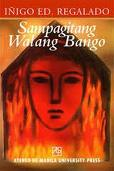
Sampagitang Walang Amoy, also rendered as Sampaguitang Walang Bango, was a 1921 Tagalog-language novel written by notable Filipino novelist Iñigo Ed. Regalado. The theme of the novel revolves around love, romance, treachery, and endurance. In the novel, Regalado depicted the City of Manila during the American occupation of the Philippines but before World War II. Sampagitang Walang Bango was one of the novels Regalado had written during the Golden Age of the Tagalog Novel (1905–1935).
Efren Reyes Abueg is a well-known and recognized Filipino-language creative writer, editor, author, novelist, short story writer, essayist, fictionist, professor, textbook writer, and anthologist in the Philippines. His works appeared on magazines such as Liwayway, Bulaklak, Tagumpay, Mod, and Homelife.
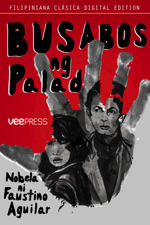
Busabos ng Palad is a Tagalog-language novel written by Filipino novelist Faustino Aguilar in 1909. Apart from tackling the "ills and injustices" in Philippine society, Busabos ng Palad revolves around love, romance, tragedy, and prostitution. The 157-page novel was published in Manila by Manila Filatelica.
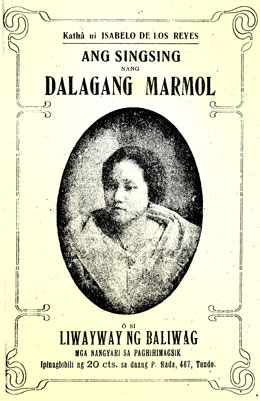
Ang Singsing nang Dalagang Marmol, contemporarily rendered as Ang Singsing ng Dalagang Marmol in the Tagalog language, is a historical novel written by Filipino novelist, scholar, and labor leader Isabelo Florentino de los Reyes before 1905. It is one of the first historical novels written in the Philippines during the first decade of the 20th century. It was also one of the first novels during the period that was written using the technique of blending fact and fiction. Through the novel, De los Reyes revealed his knowledge of the actual events during the Philippine–American War, making the subject as "integral elements" of the book. Based on the original 1912 bookcover for the novel, Ang Singsing ng Dalagang Marmol is alternatively titled Si Liwayway ng Baliwag.
Ang Huling Pagluha was the first novel of Filipino novelist Iñigo Ed. Regalado that appeared on the pages of the Tagalog-language magazine Liwayway. It began as a serial novel in Liwayway on 30 June 1926. The 283-page book version was published in 1933 in Manila, Philippines by the Bahay Aklatan "Ang Pagsilang" during the American era in Philippine history (1898-1946). Ang Huling Pagluha was one of the novels Regalado had written during the Golden Age of the Tagalog Novel (1905-1935).
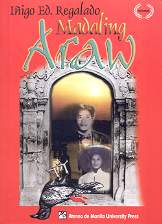
Madaling Araw ("Dawn") is a 1909 Tagalog-language novel written by Filipino novelist Iñigo Ed. Regalado. The 368-page novel was published in Manila, Philippines by the Aklatang J. Martinez during the American period in Philippine history (1899-1946). Madaling Araw won for Regalado a Panitikan Series Philippine National Book Award. The novel is both a romance novel and a political novel.

Ang Tala sa Panghulo is a 1913 Tagalog-language romance novel written by Filipino novelist Patricio Mariano. The 207-page book was published in Manila by R. Martinez and was printed by the Imprenta at Litograpya Ni Juan Fajardo during the American era in Philippine history. The novel is alternatively known as Ang Tala sa Panghulo: Nobelang Taga-ilog, which can also mean Ang Tala sa Panghulo: Nobelang Tagalog, thus the alternative English translation is The Bright Star at Panghulo: A Tagalog Novel.
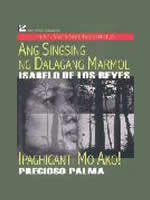
Ipaghiganti Mo Ako...! is a 1914 Tagalog-language novel written by Filipino novelist and dramatist Precioso Palma. The 207-page book was published in Manila by Limbagang Banahaw during the American era in Philippine history (1898-1946). The 1914 version of the novel has an afterword written by Julian C. Balmaceda.

Titser is a Tagalog-language novel written by Filipino novelist Liwayway A. Arceo. It first appeared as a serial on the pages of Liwayway magazine during the 1950s. In 1995, the 150-page novel was published in book form at Quezon City, Manila in the Philippines by the Ateneo de Manila University Press.
Ang Lihim ng Isang Pulo: Nobelang Tagalog – "The Secret of an Island: A Tagalog Novel " – is a Tagalog-language novel written in 1926 by Filipino novelist Faustino S. Aguilar. The 353-page novel was first published by Sampaguita Press in the Philippines in 1927. It was republished in Manila by Benipayo Press in 1958.
Agustin Caralde Fabian was a well-known Filipino writer.













